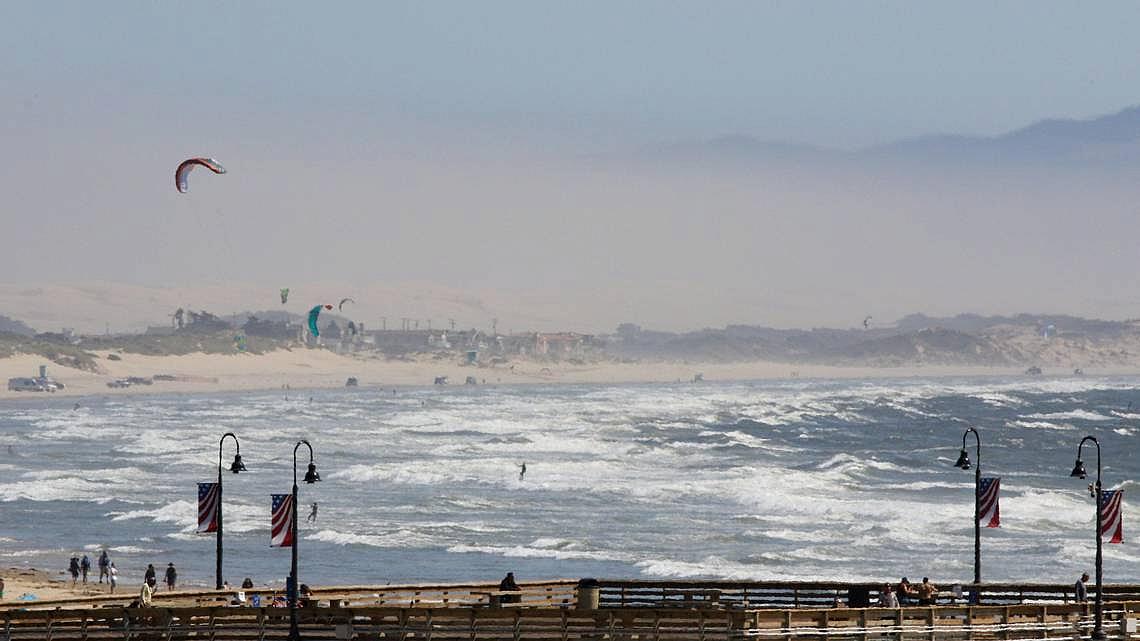Dust from the dunes: Our ongoing investigation of air quality & health on the Nipomo Mesa
This story was produced as part of a larger project led by Monica Vaughan, a participant in the 2019 California Fellowship.
Other stories in this series include:
Health alert: Air quality warning issued for Nipomo Mesa advises residents to stay inside
Live updates: Will off-roaders be banned from Oceano Dunes? Decision day is here
Dust from the dunes: Our investigation of air quality and health on the Nipomo Mesa
State Parks now has ‘workable plan’ to reduce Oceano Dunes riding area and dust by 2023
Do you live on the Nipomo Mesa? Here’s what you need to know about air quality
This is the deadliest year at the Coeano Dunes. What is State Parks going to do?
Health on the Nipomo Mesa: Join us for an open house and forum on air quality
California State Parks could be sanctioned for ignoring scientists on Oceano Dunes dust
How bad is the air quality on the Nipomo Mesa? Spikes in pollution are 'off the map'
Bad air forces people inside in this coastal California town. Is it a crisis or exaggeration?
You ask, we answer: What are the health risks of air quality on the Nipomo Mesa?
How pollution from a California State Park is putting a coastal town’s health at risk
State Parks will close portion of Oceano Dunes to vehicles by end of year, director says
California is spending $437K on a ‘wild goose chase’ study. Is a state scientist to blame?
This popular camping area at Oceano Dunes will be closed by the end of the year — here’s why

DMIDDLECAMP@THETRIBUNENEWS.COM
When strong winds blow on California’s Central Coast, a large plume of dust wafts across the Nipomo Mesa — carrying tiny particles that can penetrate deep into the lungs and result in health impacts to downwind communities.
San Luis Obispo County officials have known for decades that air quality in the rural residential area regularly violates state standards, increasing the chance of asthma attacks, and other respiratory and cardiovascular issues for thousands of people who live, work and go to school there. At times, the concentration of particulate matter is the highest in the nation, and the health risk has attracted the attention of the American Lung Association.
Wind blows sand naturally on the coast. It’s how the large sand dunes in the area are formed. But there’s evidence that the unhealthy amount of dust emissions in the Nipomo Mesa is increased by human activity.
WE’RE INVESTIGATING HEALTH ON THE MESA
The Tribune has reported on the political fight and developments in research for years. Recently, we decided to reach deeper into the issue to take a closer look with the help of USC Annenberg’s Center for Health Journalism.
We’ve knocked on doors, talked with dozens of parents after school and heard from more than 300 residents about their experiences. We’ve gathered and reviewed data from public agencies, and we’ve purchased air quality monitors and deployed them across the Mesa.
In addition, we’ve interviewed medical researchers, talked to local doctors and hosted an event at Mesa Middle School in Arroyo Grande with a panel of experts.
Over the next several weeks, you can read the stories and watch the videos that we’ve produced to share what we learned. Links for the project and updates on the issue will be posted here.
STORY 1
DO YOU LIVE ON THE MESA? HERE’S WHAT YOU NEED TO KNOW
We’ll break it down for you in our first story: Find out what we know about air quality on the Nipomo Mesa, and the best ways to protect yourself and your family from the health risks of dirty air. Read more here »»
WHERE DOES NIPOMO MESA DUST COME FROM?
Monitors show that the highest levels of dust are directly downwind from the Oceano Dunes, where the state Department of Parks and Recreation operates a State Vehicular Recreation Area. With 1,500 acres of riding area, the popular off-highway vehicle park is a big part of the local economy, and the most popular campground in the State Parks system.
State Parks’ research indicates that, during strong winds, more dust can be emitted from areas where vehicles are allowed than areas where they aren’t. Still, the Off-Highway Motor Vehicle Recreation Division of State Parks has fought the county Air Pollution Control District’s enforcement efforts.
Now there’s a plan to reduce dust emissions from the park by 50 percent by 2023, but state officials have said they’re not sure it’s possible. And a passionate and powerful grassroots lobby of off-road riding enthusiasts — who have watched their recreational area shrink over the decades — has promised to fight additional closures.
Meanwhile, farm workers, children and seniors breathe the air — many of them unaware of the air quality — and the county continues to approve housing developments in the middle of the plume.
Monica Vaughan reported this story as part of her University of Southern California Annenberg Center for Health Journalism 2019 California Fellowship with engagement support from the Center’s interim engagement editor, Danielle Fox.
[This story was originally published by The Tribune.]

